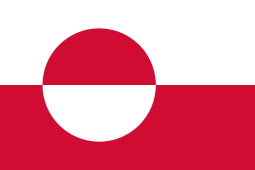Western Hemisphere Travel Initiative
The Western Hemisphere Travel Initiative (WHTI) is a United States legal framework from 2007 that requires all travelers to show a valid passport, passport card, or other approved secure document when traveling to the U.S. from areas within the Western Hemisphere.[1][2] The purpose, according to the U.S. Department of State and U.S. Department of Homeland Security, is to strengthen border security and facilitate entry into the United States for both legitimate U.S. citizens and foreign visitors. The initiative is an outcome of the Intelligence Reform and Terrorism Prevention Act, which was approved after the September 11th, 2001 al Qaeda mass-terror attacks on the US. The Western Hemisphere Travel Initiative was also implemented to deter or prevent the use of forged documents, both for terror and criminal purposes.

Implementation
The following documents are acceptable for border crossings for most travelers:[3]
- U.S. citizens and nationals:
- U.S. passport
- Passport card
- State enhanced driver's license (available in Michigan, Minnesota, New York, Vermont, and Washington[4]) approved by the Secretary of Homeland Security
- Trusted traveler program card (Global Entry, NEXUS, FAST, or SENTRI)
- A valid Merchant Mariner Document when traveling in conjunction with official maritime business
- A valid U.S. military identification card when traveling on official orders
- The final rule also outlines ongoing efforts to provide other alternative documents.
- U.S. lawful permanent residents: Lawful Permanent Resident Card (Form I-551).
- Canadian citizens:
- A valid Canadian passport
- Provincial enhanced driver's license (available in British Columbia,[5] Manitoba,[6] Ontario,[7] and Quebec[8])
- A valid trusted traveler program card (FAST or NEXUS).
- Bermudian permanent residents: A British Overseas Territories passport with valid Bermudian belonger status.
- Mexican nationals:
- A valid Mexican passport and a visa
- A valid Form DSP-150, B-1/B-2 laser visa (also called a Border Crossing Card, or BCC)
- A valid SENTRI card may be used for access to expedited border crossing lanes
US or Canadian citizen children under age 16 (or, when traveling as part of certain groups, under age 19) can also use other documents as identification, including a birth certificate, for land and sea border crossings.[9]
Native Americans in the United States, Mexico, and Canada may be able to use certain additional forms of identification (in addition to the documents valid for citizens of those countries):
- Members of the Kickapoo Band of Texas and Tribe of Oklahoma will continue to be able to use the I-872 American Indian Card (provided that it identifies them as Kickapoo), regardless of U.S. or Mexican citizenship.
- Members of other U.S. tribes may use an "Enhanced Tribal Card", when available and approved by DHS.
- Members of Canadian tribes may be allowed to use the proposed Secure Certificate of Indian Status already designed and approved by Indian and Northern Affairs Canada, waiting for DHS approval.[10]
In addition to the other documents designated under WHTI, U.S. citizens on round-trip cruise-ship voyages that begin and end at the same port of entry in the United States may also carry a government-issued photo ID and birth certificate, Consular Report of Birth Abroad, or Certificate of Naturalization. Foreign nationals need a WHTI-designated document to travel to the United States on a cruise ship.
History
Beginning on January 23, 2007, all persons (including U.S. citizens) traveling by air to the United States from all foreign countries (including Canada, Mexico, Central and South America, the Caribbean, and Bermuda) are required to present a valid passport, NEXUS card, or U.S. Coast Guard/Merchant Mariner Document.
On January 31, 2008, U.S. Customs and Border Protection officers stopped taking verbal declarations of citizenship from U.S., Canadian, or Bermudian travelers as proof of citizenship arriving from sea and land ports of entry.[11]
On March 27, 2008, the Departments of Homeland Security and State announced that "full implementation" of the land and sea provisions of WHTI would begin June 1, 2009; on that date, the above listed types of documents would become the only acceptable documents for border crossings for most travelers.[3]
Nations and territories covered
The U.S. Department of State names the following jurisdictions:[12][13][14]
![]()
![]()
![]()
![]()
![]()
![]()
![]()
![]()
![]()
![]()
![]()
![]()
![]()
![]()
![]()
![]()
![]()
![]()
![]()
![]()
![]()
![]()
The following jurisdictions in the Western Hemisphere (and all of South America) are not specifically named by the Department of State:[13][14]








.svg.png)




References
- "Western Hemisphere Travel Initiative". U.S. Customs and Border Protection.
- "Canada Border Services Agency – Documents for entry into the United States - Tourism Toolkit/Fact Sheet: U.S. Western Hemisphere Travel Initiative". Archived from the original on 2010-02-20. Retrieved 2010-01-19.
- Homeland Security and State Departments Announce WHTI Land and Sea Final Rule, retrieved April 2, 2008.
- "WHTI: Enhanced Drivers License". Archived from the original on 2012-02-15. Retrieved 2011-03-17.
- "B.C's enhanced driver's licence for U.S. border use goes public". Archived from the original on 2009-04-10. Retrieved 2009-04-06.
- "Manitobans wait for one-piece driver's license continues". 20 January 2009.
- "Enhanced Driver's Licence Applicant's Guide" (PDF).
- Chung, Andrew (17 March 2009). "New Quebec licence good for U.S. travel" – via Toronto Star.
- "WHTI: Special Audiences".
- "Secure Certificate of Indian Status - Information Kit - Indian and Northern Affairs Canada".
- DHS | Crossing U.S. Borders, retrieved April 2, 2008.
- "404 - Page Not Found". travel.state.gov. Archived from the original on 2013-11-05. Retrieved 2017-06-25.
- https://travel.state.gov/travel/cis_pa_tw/cis_pa_tw_3256.html Travel by land
- https://travel.state.gov/travel/cis_pa_tw/cis_pa_tw_3256.html Travel by sea